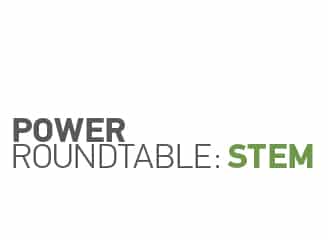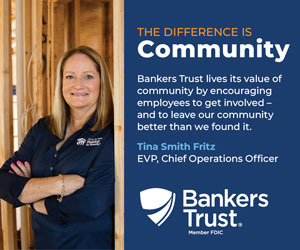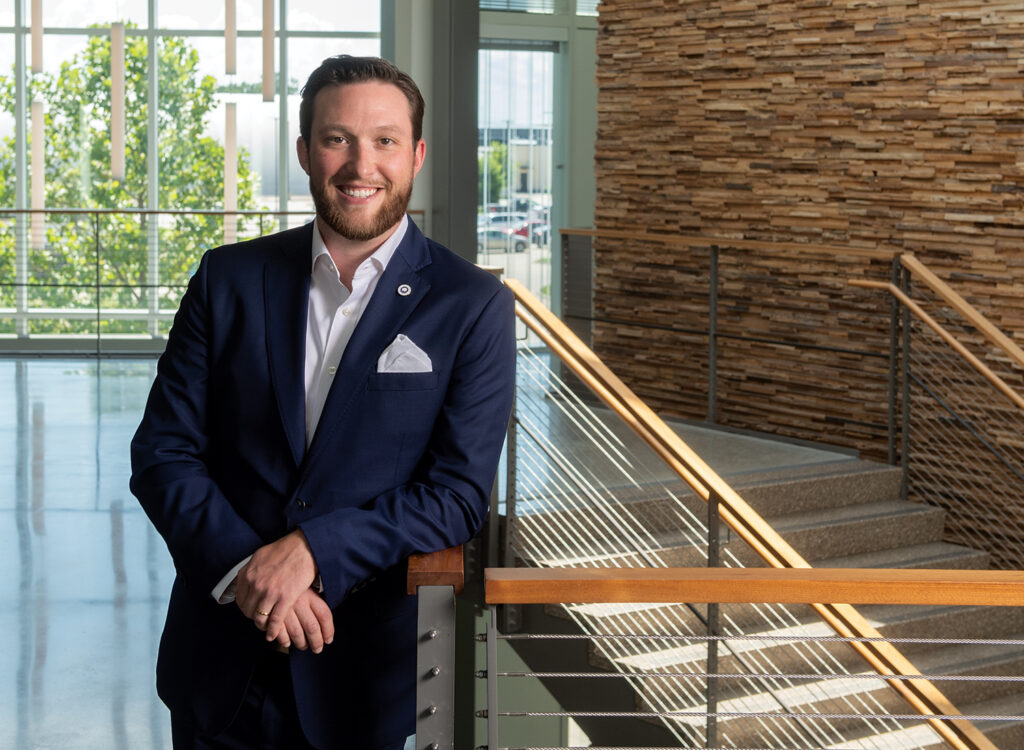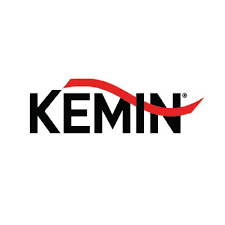Power Roundtable: STEM
Five experts talk about Iowa's effort to meet the demand for science and technology workers.

Editor’s note: Before all of our Power Breakfast events, we bring the panelists to the Business Record for a pre-event meeting on the topic and to banter through potential questions. We always leave that meeting wishing we could have invited our entire audience into the room with us to hear the informal discussion. So, we decided this year to host a series of what we are calling Power Roundtables, and invited members from a variety of industries to have a discussions about the trends, opportunities and challenges they are facing as we head into 2014. We recorded each conversation on video, which can be viewed on our website. Not only did we get a variety of story ideas for 2014 and beyond, but we also had our reporters pull out some key takeaways and observations from the discussion. For our first roundtable, we hope you enjoy this inside look at STEM (science, technology, engineering and math ) education in Iowa.
– Chris Conetzkey, editor of the Business Record
Watch the full Video Roundtable
Panelists: (left to right)
Mark Putnum – president, Central College
Alissa Jourdan – director, discovery research and worldwide research and development coordinator, Kemin Industries Inc.
Gary Scholten – senior vice president and chief information officer, Principal Financial Group Inc.
Teresa Wahlert – director, Iowa Workforce Development
Jeff Weld – executive director, Governor’s STEM Advisory Council
The Background
Chances are, by this point, you’ve heard the word STEM, which stands for science, technology, engineering and mathematics. STEM education is a hot topic right now in Iowa, as evidenced by Gov. Terry Branstad’s creating of a STEM Advisory Council of business leaders and educators. So, why is this a big issue right now?
The bottom line is that the number of STEM-related jobs is growing, but not enough students are graduating from high school with sufficient science and math skills to fill them. According to my Business Record article about the STEM initiative in 2012: “The number of STEM-related jobs in the state is projected to increase by 16 percent between 2008 and 2018. Only 11 percent of Iowa’s 2011 ACT test-takers scored college-ready in both math and science and expressed an interest in STEM majors.”
The advisory council’s executive director, Jeff Weld, was quoted as saying that Iowa has to fix the problem now. Nearly two years later, Weld said during the panel discussion that he still feels the same way. The state’s leaders, including the participants in this Power Roundtable, are answering the call.
Collaboration
One thing I’ve noticed about initiatives like this one is that in this city, people really do work together to accomplish change. The same can be said about this statewide initiative.
Consider for a moment the stakeholders who participated in our panel. We had, sitting around that table, high-ranking business officials, the head of a state organization and a college president. They not only agreed to participate, but were eager to give their input. In that room, there was a feeling of passion and a sense of urgency around the issue of STEM education and workforce development.
In fact, if you get a chance, take a look at the list of names on the Governor’s STEM Advisory Council. It includes Lt. Gov. Kim Reynolds; Brad Buck, director of the Iowa Department of Education; Rob Denson, president of Des Moines Area Community College; Steven Leath, president of Iowa State University, and a number of business people. It’s a list of decision-makers, for sure.
“We can do this, I think, because we’re together,” said Central College President Mark Putnam. “This is happening … because people are committed. As long as people are committed, across all sectors that make Iowa great, then we will succeed.”
We asked our panelists: What happens if the current STEM initiative in Iowa does not work?
Mark Putnam
President, Central College
“First of all, I think Iowa is resilient, among its many good qualities. My bet, as I have viewed the initiatives that we have undertaken, is that conversations about renewal are already there, about sustaining progress, about finding new ways to do things. If this is viewed as a singular moment in time, then we’ve failed. But if we have done something that becomes systemic, that really can become ingrained in the culture, ingrained in teacher preparation, ingrained in the school system.”
Alissa Jourdan
Director discovery research and worldwide research and development coordinator, Kemin Industries Inc.
“The first thing that popped into my mind was our first meeting of the advisory council where instructions were given out about ideas and that it had to be sustainable. That was one of the key elements of everything we were doing, that it had to be sustainable. So to answer your question, I don’t think it can (fail). I don’t think it will fail. I think that the efforts have been placed so that these do become systemic and sustainable, and that it will penetrate into our society at the family level, locally at the teacher level, where they need to be to continue it long term, so it is self-replicating, over and over and just becomes the norm.”
Teresa Wahlert
Director, Iowa Workforce Development
“I don’t believe it has an opportunity to fail, No. 1. And No. 2, I think that we have to be really conscious of how we refer to the opportunity we have. It’s not a program. A program usually has a beginning and an end. … It’s an embedded culture change that we have to make. That is why we went into high schools, because it is an embedded culture change that we are making. But our language is very important.”
Gary Scholten
Senior Vice President and Chief Information Officer, Principal Financial Group Inc.
“I’ll use a real-life example. I chair a group of large companies’ chief information officers in the state, and many of them are hedging their bets right now because they can’t get the workforce that they need. So they are establishing satellites in other parts of the country or other parts of the world. They’re outsourcing to other parts of the country because they are concerned about workforce issues and that sort of thing. And if we’re not successful in a sustainable STEM workforce development kind of program, there’s going to be more of that. … These are good jobs, well-paying jobs that we can attract here. But if we don’t do it, they are going to go outside because there’s demand everywhere.”
Jeff Weld
Executive Director, Governor’s STEM Advisory Council
“Failure is not an option. However, it is an intense competition. There are over 40 U.S. states with some version of a STEM initiative for all the different reasons we’re doing it. It’s an international movement. In February, we host a contingent from Japan who would like to replicate some aspects of Iowa’s STEM initiative in their nation. So it’s an intense competition, and I suppose the victors will succeed in bolstering or fueling a talented pipeline of innovators, translating into economic vitality for our industry. The losers will not.”
All businesses need STEM
When you read about the state’s need for more STEM education and better preparation for employees to work STEM-related jobs, you might think that it doesn’t really apply to your and your business.
For example, when I think of Principal Financial Group, the word “STEM” doesn’t immediately come to mind. Of course, that’s naive. So I asked Scholten this simple question: Why is STEM important to Principal?
He obliged and let me know that about 70 percent of Principal’s employees in Iowa are “knowledge workers,” not transaction processors. Half of those knowledge workers are “STEM workers,” and one-third of the company’s STEM-related workers are eligible to retire in the next 10 years. Also, the number of STEM jobs at the company is growing. That’s a good reason for Principal to care about the issue.
But as the other panelists pointed out, it’s not just companies that have a high concentration of STEM jobs that should care about this issue.
“Every company is a STEM company,” Wahlert said.
To think otherwise is a mistake, she said. STEM education teaches people logical problem-solving techniques, something every company should value.
Jourdan chimed in that Kemin hires employees because they have the critical thinking skills that STEM education teaches, and Weld asked, “What business doesn’t value inquirers, collaborators, critical thinkers, interdisciplinary thinkers, inventors, creative – all of which are hallmarks of a STEM education?”
In other words, you may not consider your business a STEM business, and you might not think about its jobs as STEM jobs. But pretty much every business has an incentive to make sure that the future workforce is STEM-literate.
Business can help
A big part of the problem, Weld said, is the lack of experiential learning for students in STEM. The solution is getting business people connected with students.
That can happen in the classroom or by getting students into the workplace. The STEM Council is getting ready to expand or “Scale Up” nine programs in 2014 that have worked in different parts of the state, including the Technology Association of Iowa’s HyperStream program, where business professionals work with students and teachers on an ongoing basis to teach them how computer science skills are being used in the real world. The council is trying to reach 100,000 students with the Scale Up programs.
And your business can help, said Jourdan, by reaching out to a local STEM hub to find out what opportunities are available to work with students. The hub for Greater Des Moines is at Drake University, and the contact person is Sarah Derry at sarah.derry@drake.edu.
Quick Hits
Minorities in STEM
In the STEM area, and especially in technology, there aren’t enough women, Hispanics and African Americans thinking about going into these fields, Scholten said. There are efforts underway to reach those groups, such as college engineering fairs targeted at women, but “it’s just way too small at this point to really address the issue.”
STEM underneath IDEAs
Weld addressed a question from Putnam about efforts happening at the K-12 level to connect different subjects to each other and the real world. Weld’s reply: “Imagine a graphic that hangs on my wall. STEM is the acronym. That is actually underneath the umbrella of another acronym – IDEAs. IDEAs being innovative, design, exploration and art. We need to make sure this is a comprehensive, holistic initiative, rather than one pigeonholed to one particular industry sector.”
STEM to STEAM?
There has been a push by some to turn STEM into STEAM, with the A standing for art. That was a subject that came up in the Business Record’s video panel with area cultural leaders. Wahlert, in this panel, mentioned that “you can go to the field of art, and you can find STEM all over art.”
Attracting out-of-state workers
Particularly in the technology industry, there’s a shortage of workers for available jobs, an issue I’ve written about before. Scholten brought up that issue, and noted that Iowa is being seen as a destination by people in other states to get great workers. Principal, on the other hand, has started trying to attract tech workers from out of state. The company has started an internship program, and last summer had 76 interns from 40 different schools and 14 different states. The company was confident its jobs would sell themselves, and that the city would sell itself. “And it did,” Scholten said.
More trade programs
Wahlert noted that high schools would benefit from offering more vocational or trade programs. A welder out of high school, she said, is going to have a much easier time finding a job than a Bachelor of Arts graduate in today’s world. Putnam added, “One size does not fit all.”











